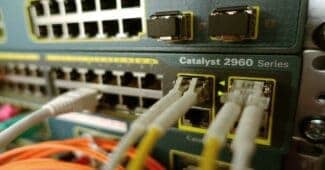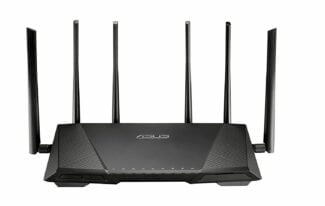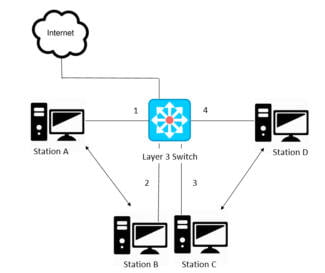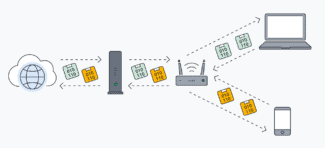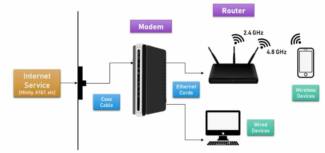All relatives were happy, because now smartphones, phones, tablets and laptops had good, stable and fast Internet.
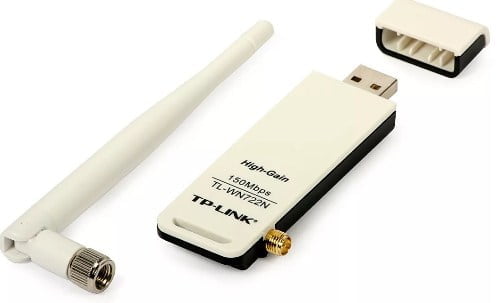
What is a router, and how does it differ from a router?

Recently, such words as router, router, switch, modem have become much more. But in particular no one thinks about what they are, until they are confronted with the settings. On many sites they write rather complicated, applying incomprehensible concepts.
I, a network magician in the fifth generation, will try to tell you more about this little magic box. I will tell you what it is, its purpose, what it is intended for, and what are its hidden capabilities and secrets.
NOTE! In the article I tried to tell about this gizmo as simply as possible, but if you have any questions, then feel free to ask them in the comments. I'll try to answer and help you right away.
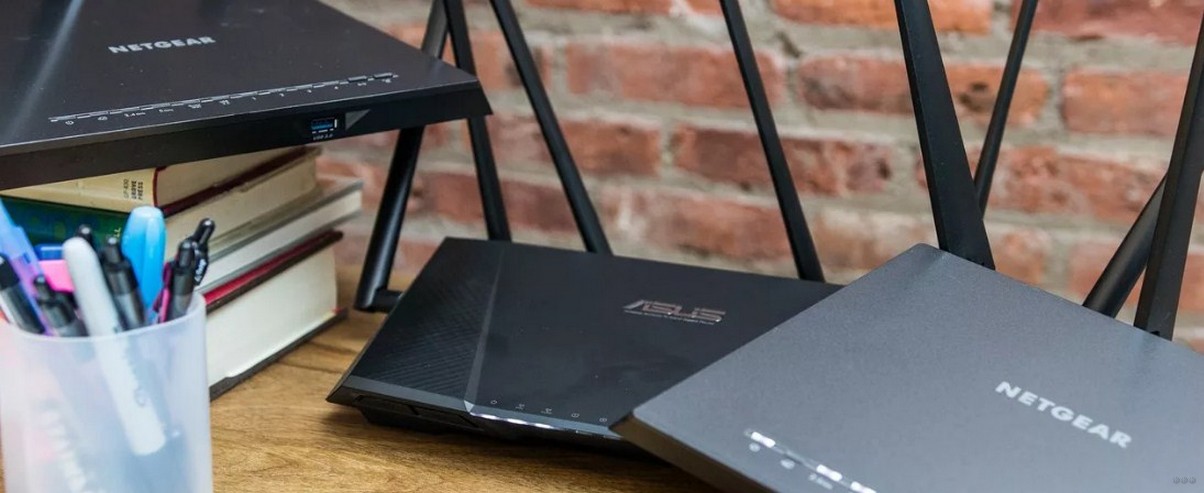
What the internet used to be like
A long time ago, in the olden days, when children did not have iPhones, the coolest majors bragged about beepers, and the word "Internet" could only scare the old ladies next door, it was after the collapse of the Soviet Union and freedom that the first providers began to appear.
But the pioneers of the Internet faced a problem. Let me remind you that the Internet appeared in the United States in 1982. Networks had appeared even earlier. But this technology didn't find the right equipment at home. The problem was that in Russia at the time, there were no wires capable of transferring data from a computer to a computer.
The usual telephone cable came to the rescue. Yes – these two wires without a braid and became the first network, with the help of which it was possible to go to sites. And then there is the question of how to transmit the signal over such wires, and even to computers that, to put it mildly, don't even have such an input.
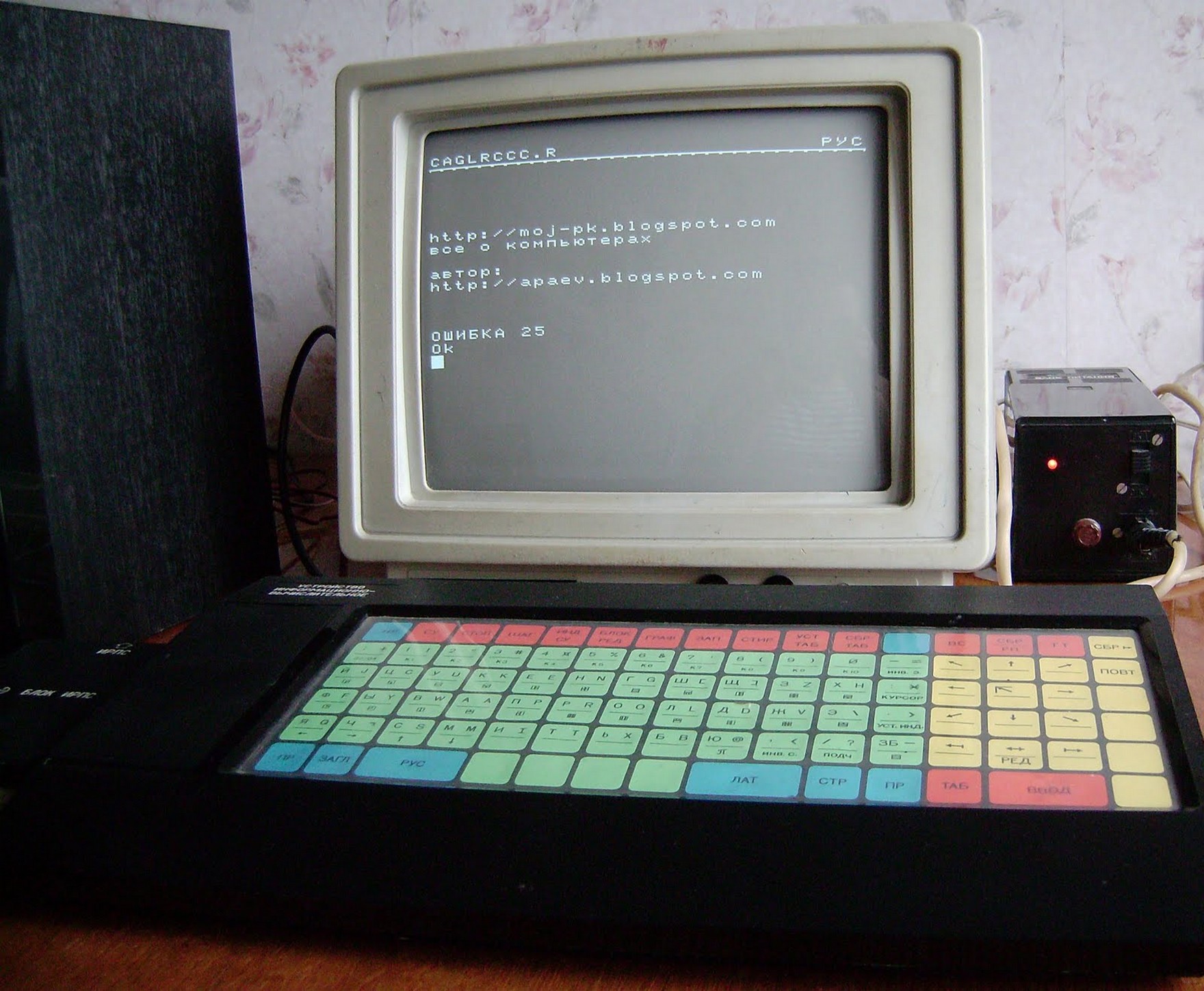
For this purpose, aDSL modems were invented. Their job was to modify the telephone signal into one that the computer could understand. I would like to say that I used one myself until 2007. The Internet was weak, expensive, and constantly interrupted. Also, if someone picked up the phone, it was gone.
And yes, in those years, no one had even heard of Wi-Fi. And networks were built around simple switches so that you could play CS with your friends at home. I don't even talk about online gaming.
What is a router and what is it for?
What is a wi-fi router (a concept for dummies) is a device designed to manage the information traffic that circulates in a computer network. Even an ordinary computer can be turned into a router.
Nowadays, a router can be used to share the Internet via cable, ADSL or Wi-Fi with other computers, provide protection through a firewall, control quality of service and perform other various tasks, mainly in the field of security.
- A wireless or Wi-Fi router provides local network and Internet access for any device, be it a laptop, a tablet, a printer.
- Through it, drives or smartphones that are within range of the signal enter the network.
A home Wi-Fi router or small business device usually has 4 ports for a local wired network (LAN) and an Ethernet port to connect an Internet modem (WLAN port).
You can grant permissions via the physical network address (MAC address), configure access ports for VNC, Spotify and download software. In addition, if a parent believes that their children should not access the Internet at dawn, the router has controls to prevent browsing at certain times.
Internet and network management is in the hands of the router administrator. And all of this is done through a web interface, on the device itself.
The principle of operation
The router has a very simple principle of operation. A router is a device responsible for distributing the Internet to one or more devices using a network cable or Wi-Fi network.
It can also connect devices on an internal network to each other, allowing data to be exchanged internally, even without a public Internet connection.
That's because the router assigns an IP address to each computer or cell phone connected to the network, and it's through them that you can access and share files with other devices-that's what the router does.
How it works and its actual purpose
A router is a device that allows you to connect one computer network to another.
It provides routing of packets between the two networks, that is, it determines the route that information should take in one direction or another.
When a user accesses a URL, the web client (browser) contacts a domain name server that specifies the IP address of the desired device. The workstation sends the request to the nearest router, which is the default gateway of the network in which it is located.
Thus, this router will determine the next computer to which data will be sent in order to select the best possible transmission path.
To do this, the device has designated routing tables, which are true route maps that can be followed to reach the destination address. Many protocols are dedicated to this task.
Routing
The question immediately arises: how does the router know where to send the data? In this case, it uses a routing table, as well as IP addresses of the local network – all computers and devices connected to the router at home. Local network addresses often start with the numbers "192.168". So if you see this combination of addresses, it's the address of some device inside the house or apartment.
As we've already figured out, the wire that goes into the router from the ISP connects us to the global Internet. This is where the router has a second address, an external address. It is given by the ISP so that the packets of information reach the right addressee.
As a result the packets go over the wire to the WAN port using the external IP address. Then router calculates where to send the packet next and looks at the internal routing table which mainly uses local IPs.
It looks at the table and sends the data to the father's computer, if he was the one who sent the request. If several people use the Internet at once, the router masterfully distributes packets of data to each recipient. The principle is similar to email.
Wi-Fi
Many people associate the internet and a router with wi-fi technology. Wi-Fi is a technology for transmitting information via radio waves. Many people might now argue, "But isn't Bluetooth, cellular communications, and even the banal microwave oven using radio waves, too?" – And yes – you would be right! But Wi-Fi uses a particular standard – IEEE 802.11. This standard is just used to build a local air network and connecting the devices connected to the router.
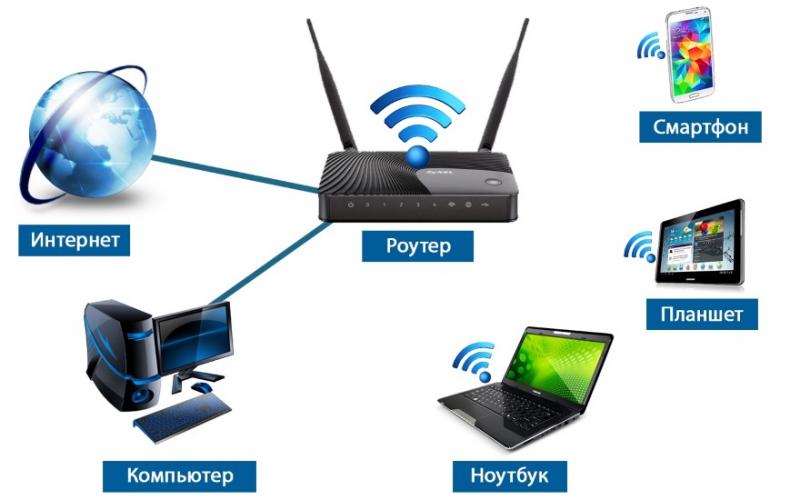
Often some users confuse wifi and internet, thinking that they are the same thing. But in fact they are two different things. Because Wi-Fi is just a technology for building an airborne local area network. That is, if you turn off the Internet or pull the cord from the provider, the wi-fi will not go anywhere, just the local radio network will be without the Internet.
The IEEE 802.11 standard has many kinds. They work on two frequencies:
As you can see, 5 GHz has a significant speed increase due to the increased frequency. Now 2.4 GHz models are more popular because they are cheaper, and not everyone needs as much speed on a LAN as a 5.
One more note – many people, seeing such figures, think about Internet speeds, but, as we wrote earlier, Wi-Fi and Internet are different things. And that means that this standard should be referred only to the internal home network.
Each frequency has its pros and cons. 2.4 GHz is the most common, and all your neighbors (if you have them) most likely sit on it. In order to be able to use one frequency in an apartment building and not interfere with your neighbors, channels were invented. In the 2.4 GHz frequency there are 14 of them. But if all your neighbors, for example, will sit on channel 1, where you sit – then there may be loss of connection, interruption and loss of speed.
How to Choose a Router
There is nothing complicated about choosing a router. Almost any device is suitable for connecting to the provider, but it is still better to read more about the types of connections from your provider and choose those devices that will not have problems with connections.
When choosing, you should also take into account where the device will be installed and what area it should cover. If the apartment area is large, and there are a lot of walls, it is better to choose a more powerful router with a lot of antennas, which can be directed in different directions.
Well, and the type of connection should not be forgotten. If you plan to connect to a telephone or mobile network, then choose a device that supports this type of connection. Otherwise, all models will satisfy the needs in wifi. You should choose carefully only if you need a particular function of the device.
For example, excellent parental control right "out of the box", in which case you should read the reviews and choose more thoroughly.
How they used to connect to the Internet: history
Now, in most cases, you do not need to use additional devices to connect. The cable that comes into the house from the provider, you can simply plug into your computer and sit on the Internet. Routers are used in large offices or for the convenience of users, because you can set it up once and forget about it for five years, until a whole generation changes and you want to change to a faster model.
Previously, in the late nineties and early 2000s, there were no dedicated lines, you had to connect via telephone lines.
Yes, yes, with the help of those very modems mentioned above. Only it was not them, but their distant ancestors. Since then, not only computers but also Internet protocols and connection technologies have changed generations.
The new ADSL modem provides connection without any problems, but its ancestors could not boast about it. To get through to the right number was problematic, the phone line was constantly busy, the speed at its best hours was up to 50 kbit / s, but usually was two times less. In addition, the cost of this pleasure was not cheap.
Internet has evolved from an expensive pleasure, which you had to know how to use, to a technology that is in every apartment and with which even a child can cope.
Read More:
